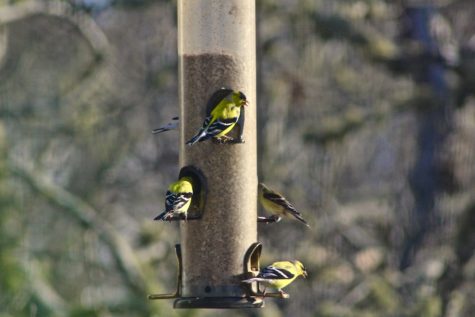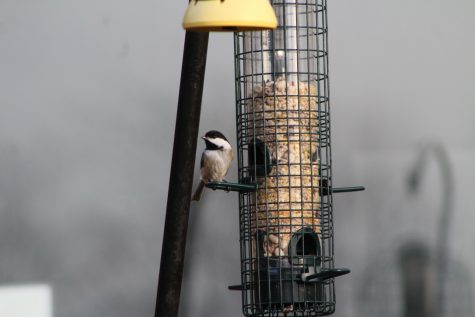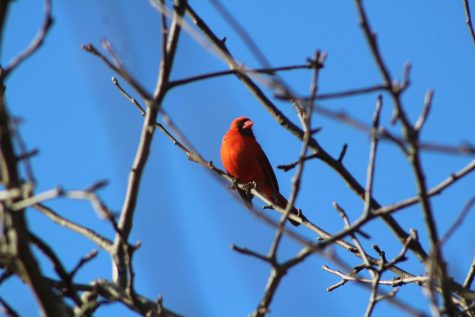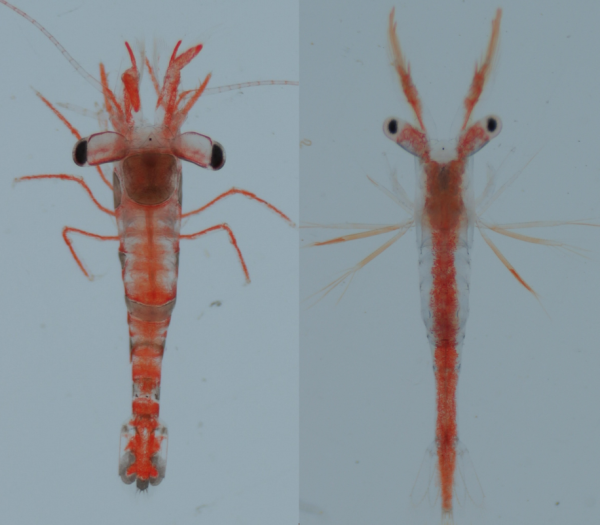The ABCs of Rhode Island birds

American Goldfinch
The American goldfinch is a small finch weighing between 11 to 20 grams. These birds live in weedy fields and floodplains but can also be seen in the backyards of homes as frequent visitors to bird feeders. They can be found hanging onto weeds and they usually hang out in large groups.
When they are in flight, these finches will make calls and bring attention to themselves. National Geographic Kids describes this finch’s call as “po-ta-to-chip.” Their colors also change with the seasons. For instance, adult males are bright yellow with a black head in the spring but are brown with blackish wings in the winter. Female goldfinches, on the other hand, have a duller body color than males and appear more greenish.
American goldfinches breed later than most North American birds in order to collect more fibrous seeds from plants, which these birds use for their nests as well as food for their babies. The American goldfinch is the only finch that molts the feathers on its body twice a year.
Black-Capped Chickadee

The black-capped chickadee is part of the chickadee and titmouse family and they are usually found in deciduous forests. They live in cavities, such as holes in the ground or rotten wood, and they tend to mate for life. These birds have small heads and plump bodies and they are recognizable with their black heads, white cheeks and grayish, tan bodies. Their calls also sound like their name: “chick-a-dee-dee.” They are also able to alert their flocks of predators by chirping more “dee-dees.” The more “dee-dee’s,” the bigger the danger.
The black-capped chickadee feeds on seeds, small insects and berries. They tend to store their food for later, all in different locations, and they are able to remember thousands of locations. They can get rid of neurons to wipe their memories in order to create new ones, allowing them to hold more information.
Cardinal
Cardinals are large songbirds that have thick bills and weigh between 1.5 and 1.7 ounces. However, the males and females look very different from each other. The male’s feathers are a bright red with a black mask while the female’s feathers are brown with red tinges in the wings, crest and tail. Cardinals feed mostly on seeds, berries and insects, and they love sunflower seeds, which explains their common appearance at bird feeders.

Cardinals have not always been up north since they mostly live in the southeast. However, they have migrated northward over the past few decades. Scientists theorize that the migration is a result of a higher frequency of bird feeders. In Rhode Island, there are northern cardinals, but four other species of cardinals also exist, which are the blue cardinals, the pheucticus cardinals, the chat cardinals and the ant tanager cardinals. Overall, these birds usually live in vines or tangles of shrubs.
Emily Dvareckas graduated from RWU in 2022 with a degree in forensic science. She spent three years with The Hawks’ Herald as the photo editor...





